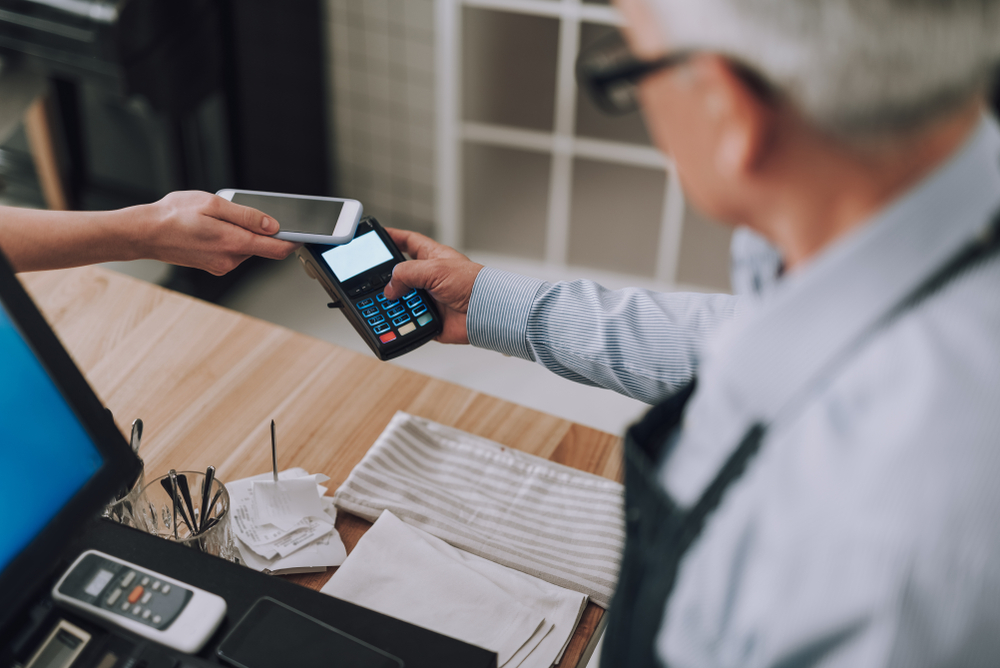Do you remember the first time you used contactless payment? The idea of simply tapping or waving your card over the terminal to complete your transaction was amazing, but now it’s very much a part of everyday life.
A leading light in our culture of convenience, contactless payment is set to become an even greater force in the next few years, but what exactly does the technology have in store for us?
Still work to do domestically
Despite its rampant success since its introduction to UK markets in 2007, contactless technology still has plenty of room to grow, particularly in the retail SME market. Three million small businesses in the UK still do not use contactless payment, with some business owners considering it more cost-effective to run a cash-only operation.
This is, in fact, an unwise strategy, with these businesses committing 81 minutes of labour a week to banking cash, not to mention alienating a significant portion of their customer base who are accustomed to a cashless existence. Businesses that do accept cards can expect to increase their revenue by 10%.
Regardless, with more than 3,000 businesses a day signing up to contactless payment and it overtaking chip and pin transactions last year, we can expect to see significant and continued growth across all markets.
Extra security for greater ceilings
One current drawback of contactless payment is its limited payment ceiling (currently £30 in the UK), but advancements in security could be set to change that figure. Amidst concerns around both more traditional and ‘drive-by’ (where thieves use wireless technology to scan your card without your knowledge) thefts, digital security firms are developing ways to secure contactless payment.
One option is biometric security – cards with built-in fingerprint sensors – whilst decentralised blockchain technologies are creating reliable digital ID systems, which temporarily gives a business access to an individual’s payment ID at the request of the customer.
Once better security systems are in place, contactless ceilings can rise, further enhancing the overall offering.
Breaking America
With the UK so familiar with contactless life, it might be hard to believe that contactless payment is somewhat of a rarity across the US. But not for much longer.
Once at the forefront of the EMV (Europay, Mastercard and Visa) movement, US issuers were initially hesitant to adopt contactless technology, favouring a push on traditional chip and pin instead. However, with contactless cards having taken off all around the world, the US is looking to catch up to their global counterparts swiftly as consumer demand increases.
How they go about their next phase of contactless development is somewhat up in the air, which brings us to our next point.
Plastic v mobile v wearables
Current technologies will be replaced by bigger and brighter offerings, but that doesn’t mean that the contactless card is dead in the water, at least for the foreseeable future.
The card is set to remain the weapon of choice for many, as it dominates consumer preference thanks its familiarity and reliability. It’s proposed the conventional card route will be the best method to indoctrinate the US market into contactless payments, as consumers trust their faithful plastic over the likes of mobile pay.
Of course, that doesn’t mean that mobile payments don’t have their own vertical trajectory to look forward to. Mobile devices provide a platform for providers to develop the next phase of contactless pay, due to the feasibility of including value-added services.
Finally, expect to see a big rise in the use of wearable devices over the next few years. Contactless technology is currently finding its way into watches, rings, keys, wristbands and even stickers to diversify consumer choice in how they make their purchases.
What’s for sure is, while the card will be sticking around a little longer yet, accessibility and use of mobile and wearable technologies will grow exponentially from here on out.
With new devices springing up all the time and methods of payment becoming easier than ever, consumers will need to be extra careful when it comes to managing their finances. However, the benefits of contactless payment are undeniable, and the revolution is only going to get bigger, faster and stronger.
Source: The Fintech Times
